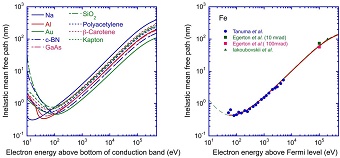Volume 66, Issue 5
Special Feature : Progress of Vacuum and Surface Science and Technology in the Early 21st Century-the 20th Anniversary of e-JSSNT-
Displaying 1-13 of 13 articles from this issue
- |<
- <
- 1
- >
- >|
Preface
-
Article type: Preface
2023 Volume 66 Issue 5 Pages 261
Published: May 10, 2023
Released on J-STAGE: May 10, 2023
Download PDF (359K)
Special Feature : Progress of Vacuum and Surface Science and Technology in the Early 21st Century-the 20th Anniversary of e-JSSNT-
-
Article type: Introduction
2023 Volume 66 Issue 5 Pages 262-263
Published: May 10, 2023
Released on J-STAGE: May 10, 2023
Download PDF (300K) -
Article type: Review
2023 Volume 66 Issue 5 Pages 264-270
Published: May 10, 2023
Released on J-STAGE: May 10, 2023
Download PDF (4077K) -
Article type: Review
2023 Volume 66 Issue 5 Pages 271-276
Published: May 10, 2023
Released on J-STAGE: May 10, 2023
Download PDF (1961K) -
 Article type: Review
Article type: Review
2023 Volume 66 Issue 5 Pages 277-283
Published: May 10, 2023
Released on J-STAGE: May 10, 2023
-
Article type: Review
2023 Volume 66 Issue 5 Pages 284-291
Published: May 10, 2023
Released on J-STAGE: May 10, 2023
Download PDF (2467K) -
Article type: Review
2023 Volume 66 Issue 5 Pages 292-298
Published: May 10, 2023
Released on J-STAGE: May 10, 2023
Download PDF (1732K) -
Article type: Review
2023 Volume 66 Issue 5 Pages 299-304
Published: May 10, 2023
Released on J-STAGE: May 10, 2023
Download PDF (7015K)
Report
Conference Report
-
Article type: Report
2023 Volume 66 Issue 5 Pages 305
Published: May 10, 2023
Released on J-STAGE: May 10, 2023
Download PDF (277K) -
Article type: Report
2023 Volume 66 Issue 5 Pages 306
Published: May 10, 2023
Released on J-STAGE: May 10, 2023
Download PDF (715K)
Science Café
Introducing our New Ph.D.
-
Article type: Science Café
2023 Volume 66 Issue 5 Pages 307
Published: May 10, 2023
Released on J-STAGE: May 10, 2023
Download PDF (705K)
Research Abroad
-
Article type: Science Café
2023 Volume 66 Issue 5 Pages 308-309
Published: May 10, 2023
Released on J-STAGE: May 10, 2023
Download PDF (1397K)
News & Trends
-
Article type: News & Trends
2023 Volume 66 Issue 5 Pages 310
Published: May 10, 2023
Released on J-STAGE: May 10, 2023
Download PDF (324K)
- |<
- <
- 1
- >
- >|






